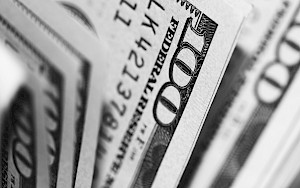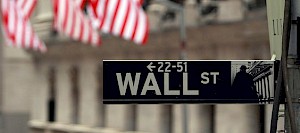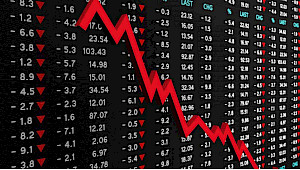Is the U.S. purposely under-reporting inflation? It’s hard not to wonder when you look at how it’s calculated
January 20, 2022Originally published in The Toronto Star on January 11, 2022 as contributing columnist
“If you can’t convince them, confuse them.” - Harry S. Truman
We are living in a world where people seem to relish in the consumption of misinformation. That is, different versions of reality and alternative facts. Some of the stuff people believe is beyond looney. For instance, it’s easy to dismiss the truly wacky stories from the QAnon world about politicians and Hollywood elites drinking the blood of babies.
It’s very difficult, however, to detect the deception that takes place when government agencies report on matters related to the economy. So difficult, in fact, that most economists don’t even understand it, never mind the general public.
One of the most damaging deceptions emanates from the methods used by the U.S. Bureau of Labor Statistics’ (BLS) calculation of the consumer price index (CPI).
The reported CPI is currently running at just under seven per cent, annualized. You might be surprised to hear that number would be closer to 15 per cent if the BLS used the same formula it did in the 1970s. (Go to http://www.shadowstats.com/alternate_data/inflation-charts for details). At some point in the 1990s the U.S. Congress decided the old formula needed updating, so they introduced several ‘methodological improvements.’
In fact, over the past 30 years they have changed their methods of calculation 20 times. Making any sense of their approach is impossible, as the BLS does not disclose the raw data it uses in its formulas. In the art of illusion, keeping a secret is the greatest sleight of hand.
These changes fall into two broad categories. First, adjusting prices based on what the BLS refers to as “hedonic” changes in quality through innovation, where the consumer derives additional pleasure from a specific product, such as a computer, TV or appliance, results in reducing or eliminating the real-life price increase.
The approach they use is so complex, even Stephen Hawking would have difficulty deciphering it. As an example, the following is the BLS’ own attempt at an explanation of their approach when calculating the hedonic value improvement of a TV set. (Taken directly from the BLS website.)
“Item A is a television that is no longer available, and it has been replaced by a new television, Item B. The characteristics in bold differ between the two TVs. There is a large degree of quality change and there is a very large (400 per cent) difference in the prices of these TVs. Rather than use the 400 per cent increase in price between Item A and Item B, the quality adjusted rate of price change is measured by the ratio of the price of Item B in the current period ($1,250.00) over an estimated price of Item B in the previous period – Item B’.
To derive the estimated price of Item B, we use the following equation:
(3) Where PB,t+s-1 is the quality adjusted price, PA,t+s-1 is the price of Item A in the previous period, and is the constant e, the inverse of the natural logarithm, exponentiated by the difference of the summations of the ßs for the set of characteristics that differ between items A and B. The exponentiation step is done to transform the coefficients from the semi log form to a linear form before adjusting the price.
The resulting price change is -7.1 per cent after the quality adjustment is applied.”
Thus, a TV that has gone up in price by 400 per cent is reported in the CPI as going down in price by seven per cent. Tell that to the average salaried worker who just had to buy a new TV set, while his salary hasn’t increased in years. He couldn’t care less. At the end of the day, it still represents a bigger chunk of his paycheque. As they say in the software world, garbage in, garbage out.
The other calculation method used by government statisticians is “substitution.” Put simply, if one item in your basket of goods goes up in price, they can choose to change the item to one in a similar category. Take meat products as an example. If beef prices go up, they can substitute with chicken. (In November, the price index for meats rose 16 per cent compared with a year earlier, according to the BLS, in contrast to a 6.8 per cent rise in the overall CPI.). If chicken prices go up, why not try some ham? Cheddar instead of Swiss cheese? You get the picture. The inflation of protein products may explain why Spam canned meat sales have recently hit a record high for the seventh year in a row.
The weighting of items in the CPI basket also produces a distorted picture of the cost of living, especially for lower income groups. As an example, food and beverages represent only 15 per cent of the index. (Interestingly, meat, poultry, fish, fruits, and vegetables represent a combined three per cent of the index. Makes you wonder what the BLS expects people to eat.) Shelter accounts for 33 per cent. If you are living near the poverty line, food and shelter is pretty much all you can afford.
Items in the basket such as travel are not in your budget. In 2021 alone, rents have increased 18 per cent and, as most of us know from going to the grocery store, all food items are going through the roof; sugar, corn, wheat, coffee, cereals are all up double and triple digits. And yet, the BLS reports a CPI of under 7 per cent.
So, why all this obfuscation? There are plenty of incentives for the government in reporting lower inflation figures. The CPI is used as a benchmark for several government programs that affect around 80 million Americans, including school lunch programs, military and civil service retirees, food stamp recipients and most importantly, social security beneficiaries. The lower the CPI, the less the government needs to spend on cost-of-living adjustments. Notice that all the above categories are people in the lower income group? There are no yachts in the CPI basket of goods.
Also, the lower the reported inflation rate, the less the Fed needs to do to raise rates, thereby appeasing their Wall Street masters. Hedge funds and the wealthy can borrow at practically zero interest rates to buy all types of hard assets. The end result? The stock market and prime real estate go up and the rich get richer.
You might wonder why the mainstream media isn’t screaming blue murder about this. I think most media are financially illiterate and CPI is too complex an idea for your average broadcast media commentator. There has been one conspicuous voice that has been pointing out the truth about this very subject recently. Fox News’ Tucker Carlson has been on an inflation rant. Now, I disagree with 95 per cent of the misinformation Carlson spews, but in this case, he is pretty bang on. The only flaw in his attack (given he is preaching to the far-right side of the choir) is that he is blaming all of it on the Biden administration. The truth is that running deficits and piling on debt has always been a bipartisan sport.
The result of all of this is that the inequality gap will continue to widen, lower income groups will struggle to make ends meet, which will surely lead to more social unrest. The real tragedy in all this deliberate obfuscation, is that most people won’t truly understand the root cause of their misfortune. Any student of history knows, this is usually when unscrupulous politicians see an invitation to provide oversimplified populist answers and demagoguery. Meanwhile, policy-makers hide behind false data and pontificate about returning to a normal, functioning economy.
For the rest of us, there’s only one accurate way to measure inflation: Ask yourself, what does it cost you to live compared to what it cost you a year ago? Yup, you got it. It doesn’t require complex formulas — just simple arithmetic.










